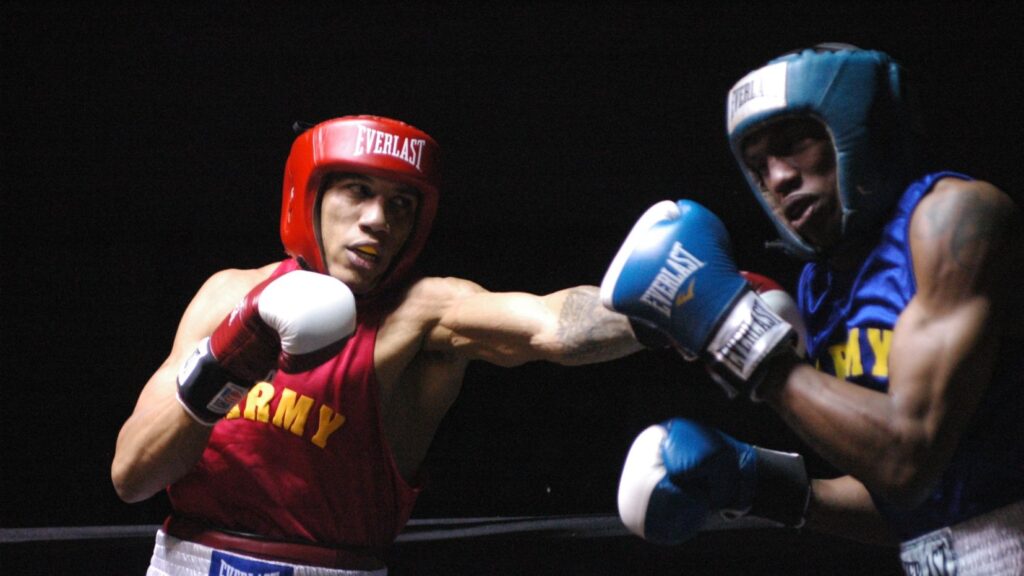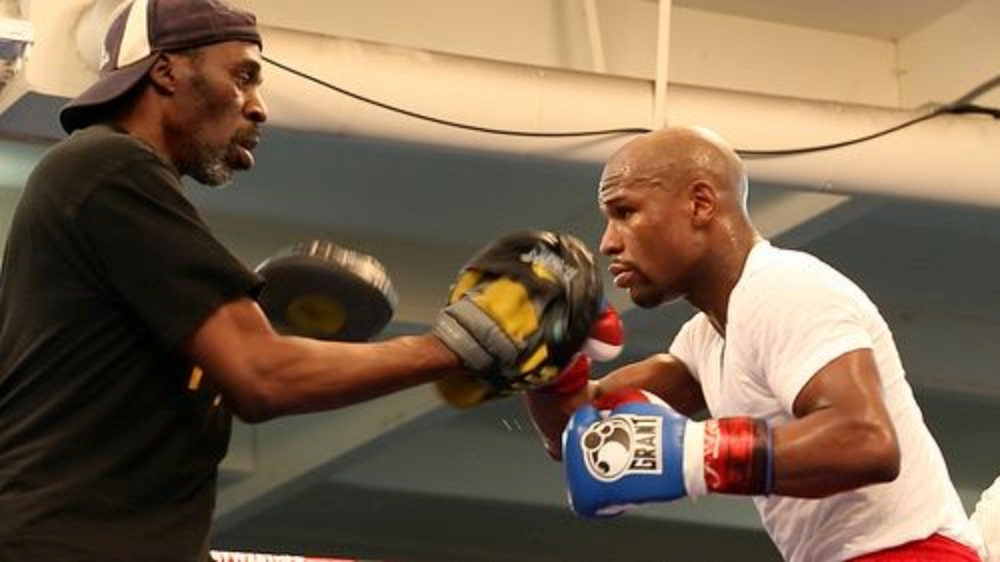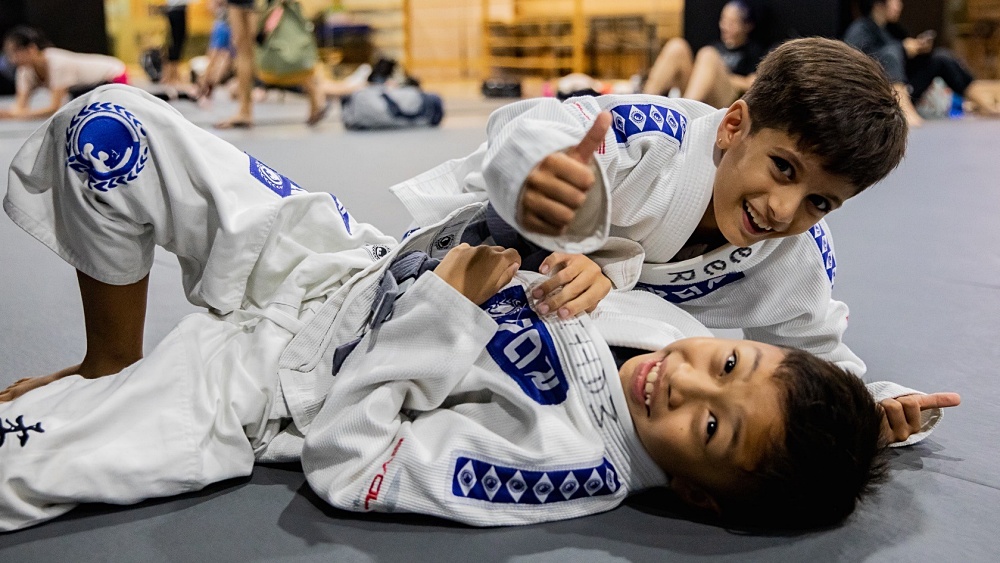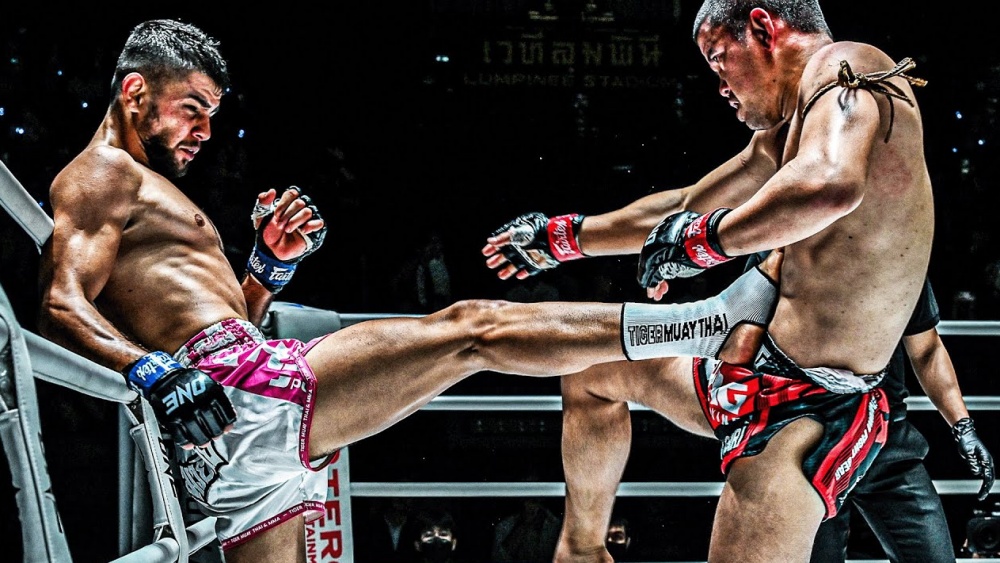If you’re going to dish it out, you’ve got to be willing and able to take it as well.
When people often refer to your chin, beard, or jaw in boxing, they’re most likely not referring to your profile image. Boxers who have great chins are generally perceived to be tougher than the rest. It is difficult to knock them down, let alone knock them out.
Some boxers aren’t as lucky. When a percentage of fighters get so much as touched on the chin, they go down. But there is a way to improve this.
There is a multitude of factors that contribute to a strong chin, from strengthening the neck to learning how to actually take punches. The important thing to know is, improving your chin doesn’t mean just knowing how to take a better punch, it also means improving your overall defense as well.
A host of ways are available to increase your punch resistance and to learn how to better absorb strikes. Today, Evolve Daily shares four ways to improve your chin in boxing.
1) Strengthen Your Neck Muscles
Improving neck strength doesn’t happen overnight. It’s a process that takes a lot of time and effort. One way to strengthen your neck muscles is through constant resistance and isometric training.
Isometric exercises use natural weight to counter a force without actually moving the body. An example of a neck workout to try is placing your hand on your forehead while applying pressure. Push against your hand with both your head and neck. The same can be done by placing a hand on the back of your head, and on the sides. The general rule is that you must counter the force.
Another example of an exercise is holding a tennis ball underneath your chin. Try to keep the ball in place while you perform different boxing drills like the heavy bag or double-ended bag. This will train your chin to be constantly tucked in and in a defensive position.
Lastly, a technique that most professional boxers use is free weight resistance training. Take note however that if you have never done this before, it is best to perform with supervision. Using a neck strap, tie a lighter weight to the back of your head as you lie face down. Now move your head up and down. This will strengthen your neck muscles and stabilizers.
2) Bite Down And Keep Your Chin Tucked In
Boxers are always taught to keep their chins tucked in as a basic component of defense. This is the first step to taking a better punch.
Strength training is definitely important, but even if you have a strong neck, you are still vulnerable to being knocked out or dazed if you don’t develop the proper techniques and good habits in the ring. Keeping your chin down and constantly tucked into your chest makes it a harder target to hit while keeping it stable and sturdy. While your chin is tucked in, try to slightly bite down on the mouthpiece to add extra stabilization.
Never leave your chin exposed and hanging out, open to being hit. Remember, the best way to deal with strikes is not taking any at all. Not getting hit is still your top priority. But if you must get hit, and you likely will, it’s best to be prepared to take it.
Notice how professional boxers keep their chins tucked in at all times. It’s a basic defensive concept taught as early as the amateur level. Your chin is the most sensitive point of contact on your body in boxing because taking a punch can immediately cause a knockout.
Protect your chin by keeping it tucked into your chest.
3) Learn How To Roll With The Punches
Learning how to roll with the punches reduces the impact of a punch even if it lands. The greatest defensive boxers use this technique to mitigate the damage done by their opponents’ offense. Sometimes, you just can’t avoid getting hit. Using sound technique, however, you can lessen the impact so that punches have little to no effect.
Developing strength in your neck is paramount to preventing yourself from getting knocked out in competition. By rolling with the punches, your head flows in the same direction of an opponent’s punch at the moment of impact, allowing you to move away from the power.
The key here is anticipation. Anticipate when you are going to get hit and then move your head accordingly in the same direction as the punch you’re taking. It’s best to practice this in training and in sparring so that when it comes to the real deal, you’ll be equipped with the proper reflexes and timing.
Strengthening the neck and trapezius muscles allows for greater knockout resistance, and rolling with the punches minimizes impact. Some of the most well-known boxers to employ this technique are Floyd Mayweather Jr., “The Prince” Naseem Hamed, and Pernell “Sweet Pea” Whitaker.
4) Improve Your Defense
Lastly, the best way to improve your chin in boxing is by improving your overall defense. After all, not getting hit is still way better than having to deal with strikes that land.
As with all martial arts, the basics are extremely important in boxing. Things such as keeping your hands up to guard your chin, maintaining a line of sight with your eyes locked on your opponent at all times, and of course, moving your head constantly by bobbing and weaving — these are all important aspects of defense that you must train consistently.
Enhancing your defense is the greatest contributing factor to a better chin. Some fighters are born with weak chins. If you don’t get hit, however, then you don’t take damage. It’s as simple as that. So work hard on your defense, and you won’t have to worry whether or not you can handle your opponent’s power.
You may also like:
















